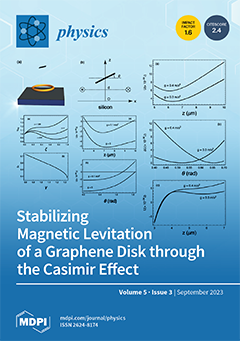In the present paper, we describe a 2.5D (two-and-a-half-dimensional) magnetohydrodynamic (MHD) simulation that provides a detailed picture of the evolution of cool jets triggered by initial vertical velocity perturbations in the solar chromosphere. We implement random multiple velocity,
, pulses of
[...] Read more.
In the present paper, we describe a 2.5D (two-and-a-half-dimensional) magnetohydrodynamic (MHD) simulation that provides a detailed picture of the evolution of cool jets triggered by initial vertical velocity perturbations in the solar chromosphere. We implement random multiple velocity,
, pulses of amplitude 20–50 km s
between 1 Mm and 1.5 Mm in the Sun’s atmosphere below its transition region (TR). These pulses also consist of different switch-off periods between 50 s and 300 s. The applied vertical velocity pulses create a series of magnetoacoustic shocks steepening above the TR. These shocks interact with each other in the inner corona, leading to complex localized velocity fields. The upward propagation of such perturbations creates low-pressure regions behind them, which propel a variety of cool jets and plasma flows in the localized corona. The localized complex velocity fields generate transverse oscillations in some of these jets during their evolution. We study the transverse oscillations of a representative cool jet J
, which moves up to the height of 6.2 Mm above the TR from its origin point. During its evolution, the plasma flows make the spine of jet J
radially inhomogeneous, which is visible in the density and Alfvén speed smoothly varying across the jet. The highly dense J
, which is triggered along the significantly curved magnetic field lines, supports the propagating transverse wave of period of approximately 195 s with a phase speed of about 125 km s
−1. In the distance–time map of density, it is manifested as a transverse kink wave. However, the careful investigation of the distance–time maps of the x- and z-components of velocity reveals that these transverse waves are actually of mixed Alfvénic modes. The transverse wave shows evidence of damping in the jet. We conclude that the cross-field structuring of the density and characteristic Alfvén speed within J
causes the onset of the resonant conversion and leakage of the wave energy outward to dissipate these transverse oscillations via resonant absorption. The wave energy flux is estimated as approximately of 1.0 × 10
ergs cm
s
. This energy, if it dissipates through the resonant absorption into the corona where the jet is propagated, is sufficient energy for the localized coronal heating.
Full article





